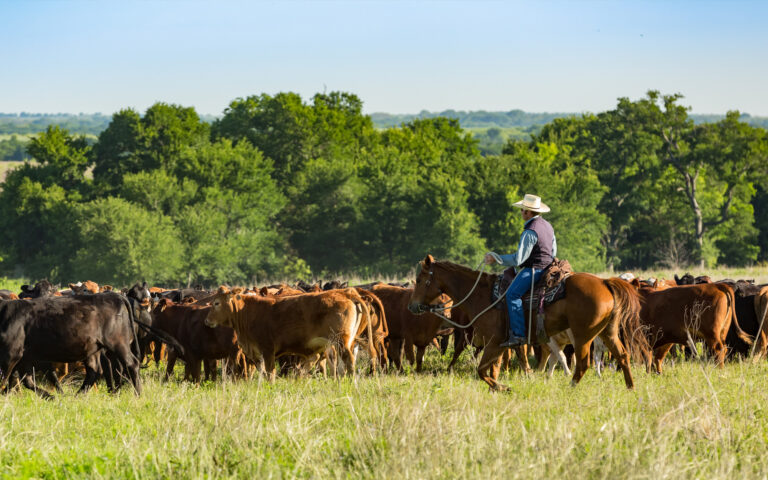For senior healthcare facilities, having the right financial support is essential for success and sustainability. However, finding a lending partner who understands the industry’s unique financial landscape and offers flexible, tailored solutions is challenging for many brokers.
Many lending sponsors have found support in government-sponsored enterprises (GSEs) like the U.S. Department of Housing and Urban Development (HUD), Freddie Mac, and Fannie Mae—however, this hasn’t always been the perfect course of action. Keep reading to learn why so many senior healthcare sponsors are turning to the USDA and what this means for your borrowers.
The Challenge of the Nursing Care Industry
Since the onset of the pandemic, the senior healthcare industry has encountered its fair share of challenges. With seemingly countless COVID precautions in place, an unfortunate uptick in resident deaths, and several other factors at play, nursing homes, assisted living facilities, and other adjacent operations saw a significant decline in occupancy.
The industry is only now beginning to recover with positive year over year improvements in occupancy, but despite these improvements, the financing landscape for senior care housing has never been more challenging. Underwriting requirements from the likes of HUD, Fannie and Freddie are onerous and haven’t adapted to post COVID conditions. Many sponsors have considered solving this issue by going through a bank. However, many banks have considered getting involved with senior healthcare to be a risky venture. Additionally, some have thought of the Small Business Administration (SBA), but, unfortunately, there is a very limited amount of money borrowers can take advantage of within this industry.
That’s where the USDA comes in.
How the USDA Aids Senior Healthcare Facilities
Thanks to the United States Department of Agriculture (USDA)’s guaranteed lending market, rural senior living facilities in areas with less than 50,000 inhabitants are granted extra flexibility. This fills a significant void in the market, especially for units built within the past three to four years.
Here are six primary reasons why the USDA is a lifesaver for so many senior businesses.
1. High Leverage
In stark contrast to other lending options, the USDA can finance up to 80% of the property value through the USDA Business & Industry (B&I) program and up to 100% through the USDA Community Facilities program.
The USDA B&I program is the best fit for “for profit” senior housing operators in rural areas. The term/amortization have a long repayment period up to 30 years, and in some cases, as long as 40 years.
USDA CF program is the best fit for 501c3 senior housing operators in rural markets. The CF Direct and the CF Guaranteed lending programs have terms of 35/40 and below market interests. This program is focused on health care projects that meet the essential needs of the local community.
High Leverage reduces the initial capital requirement for owners, making it easier for Senior Housing operators to get projects off the ground or inject necessary funds into existing operations. This is particularly valuable in senior healthcare, where the costs associated with constructing or renovating facilities can be prohibitively high.
2. Reliance on In-Place and Projected Cash Flow for Underwriting
Traditional lending avenues like conventional bank lending, HUD, Fannie Mae, and Freddie Mac often rely heavily on historical cash flows for underwriting loans, which creates obstacles for facilities recovering from temporary setbacks like those caused by the onset of the COVID-19 pandemic.
Alternatively, the USDA adopts a more forward-looking approach, basing underwriting on in-place cash flow and factoring in projected cash flow. This enables businesses to qualify for financing in a much shorter time frame, with less stringent underwriting hurdles to overcome. This methodology acknowledges the evolving nature of the senior healthcare sector and the potential for facilities to bounce back and grow, making USDA loans more accessible to these businesses in their recovery phase.
Are you ready to grow your rural business? Expand your company and make a significant impact on your community with guaranteed USDA loans on behalf of Ready Capital.
3. No Minimum Occupancy Requirement
Occupancy rates are a critical metric in the senior healthcare industry, directly impacting facilities’ revenue and financial stability. During the peak of the pandemic, many facilities saw a significant decline in occupancy, which would typically disqualify them from securing loans from entities like HUD, Fannie Mae, and Freddie Mac.
However, the USDA does not have a minimum occupancy requirement, recognizing the temporary challenges facilities face and focusing on their potential for recovery and profitability. In fact, the USDA B&I Loans instead look closely on monthly improvements in the CENSUS, background and experience of the Operator and the market dynamics that support projected growth in occupancy and revenue.
4. Self-Amortizing Loans with Flexible Prepayment Penalties
The USDA’s loan products often come with self-amortizing features, which means the loan payments include both the principal and interest, allowing for a clear timeline to full repayment without balloon payments.
Additionally, the USDA’s prepayment penalties are generally more flexible compared to the stringent defeasance or yield maintenance clauses found in loans from other entities. Whether borrowers want to pay off loans early or not, it’s much easier to get out of the loan early compared to other options. This even works for individuals trying to get specific types of loans, like USDA Community Facilities (CF) loans for non-profit businesses.
This flexibility affords borrowers more control over their financing and the freedom to make decisions that best support their long-term financial health.
5. Advantageous Timing
The timing for loan approval and closing can be critical for senior healthcare facilities, especially those in urgent need of renovation or looking to capitalize on new opportunities.
Candidly, processing any government guaranteed loan or grant is a long and arduous process. However, when compared to HUD and other similar programs, the USDA takes less time to process and close; current timing on HUD loans, for example, can take 9-12 months. Closing USDA guaranteed loans, by contrast, can be completed in half the time.
6. Permissibility of Non-Recourse Loans
The USDA permits non-recourse loans on a case-by-case basis, providing a significant benefit by limiting personal liability, however standard carve outs for fraud and willful misconduct can apply.
The Bottom Line
The USDA’s B&I and CF guaranteed loan options for the senior healthcare sector emerge as a uniquely attractive proposition, especially in a post-pandemic landscape. With high leverage financing, a forward-looking underwriting approach, the absence of minimum occupancy requirements, borrower-friendly loan terms, timely process, and the possibility of non-recourse loans, the USDA addresses many of the key financial challenges facing senior healthcare facilities today.
Brokers and Advisors alike should consider these options the best financial solution for their client’s needs. The USDA is a competitive option and even more appealing than other lending sources. By leveraging the flexibility and advantages offered by the USDA, facilities in the senior healthcare space are better positioned to recover, grow, and continue providing essential services to their communities.
Discover Your Financing Options With Ready Commercial
In the quest for the most supportive and flexible financing options in the senior healthcare sector, Ready Commercial shines as your premier USDA lender. Ready Capital focuses on customer service and takes a hands-on approach.
Contact Ready Capital today to explore how USDA-guaranteed loans can revitalize your senior healthcare facility with favorable terms designed for your success.





